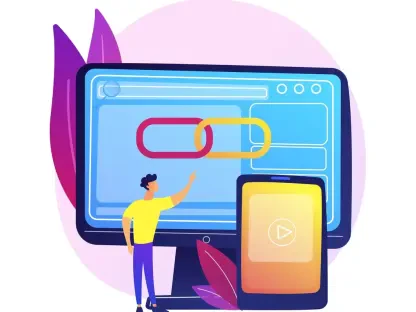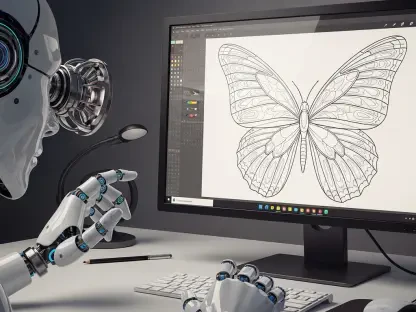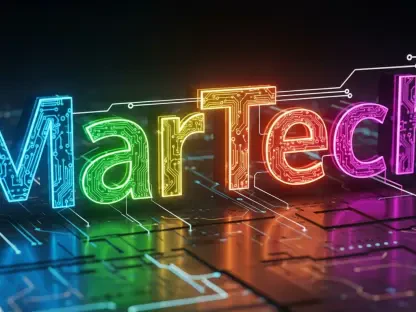Imagine a world where a single algorithm can optimize a million-dollar ad campaign in seconds, outpacing even the sharpest human strategist, and this is the reality of paid media today, where artificial intelligence has transformed the landscape of performance marketing, particularly in areas like Pay-Per-Click (PPC) advertising. The challenge lies in assembling a team that can not only keep up with these rapid advancements but also leverage them to drive unparalleled results. This guide aims to help marketing leaders and business owners build a high-performing paid media team tailored for the AI era, ensuring competitiveness in an industry defined by automation and innovation.
The purpose of this resource is to provide a clear, actionable framework for rethinking traditional hiring practices. With AI tools automating tasks that once required deep specialization, the skills needed for success have shifted dramatically. This guide addresses the critical need to prioritize versatility, critical thinking, and human-centric abilities over outdated expertise, offering a roadmap to create a team that thrives amidst technological disruption.
Understanding the stakes is essential for any organization looking to stay ahead. As AI continues to redefine strategies across platforms, from automated bidding to creative generation, building a team with the right mix of skills becomes a strategic imperative. This guide lays out the steps to identify and cultivate talent capable of navigating this dynamic environment, ensuring that campaigns deliver results while adapting to constant change.
Why AI is Redefining Paid Media Team Dynamics
Artificial intelligence has become a game-changer in the realm of paid media, fundamentally altering how teams operate and succeed. Tools like automated bidding algorithms and generative content systems have streamlined processes that once demanded hours of manual effort. This shift necessitates a reevaluation of team structures, moving away from rigid roles toward a model that values adaptability and innovation in performance marketing disciplines such as PPC advertising.
The impact of AI extends beyond mere efficiency, reshaping the very skills required for success. Marketers must now blend technical proficiency with strategic foresight, understanding how to harness AI tools while maintaining a focus on overarching business goals. This evolution highlights a departure from traditional hiring practices, pushing leaders to seek individuals who can pivot across challenges and embrace emerging technologies without hesitation.
Key areas of focus in this new landscape include multi-channel expertise, the ability to think critically about data and tools, and the preservation of human-centric skills like empathy in communication. These elements form the foundation of a competitive team, ensuring that organizations are not just reacting to changes but proactively driving innovation. The path ahead involves a deliberate approach to recruitment and development, aligning talent with the demands of an AI-driven industry.
The Evolution of Paid MediWhy Traditional Skills Fall Short
Historically, paid media roles relied heavily on specialists who mastered a single channel, such as paid search or display advertising. These experts thrived by diving deep into platform-specific tactics, optimizing campaigns with granular precision. However, this narrow focus is increasingly insufficient as the industry undergoes a profound transformation driven by technological advancements.
The advent of AI-powered tools, such as Google’s Performance Max and Meta’s Advantage+, has automated many of the tasks that once defined these specialized roles. Routine optimizations and data crunching are now handled by algorithms, diminishing the value of isolated expertise. Instead, a broader perspective that prioritizes the entire user journey across multiple touchpoints has emerged as a critical requirement for modern marketers.
This shift underscores the need to update hiring criteria to reflect current demands. Teams must be prepared for ongoing changes, anticipating future challenges rather than clinging to outdated methodologies. By focusing on a holistic understanding of how different channels interact, organizations can better position themselves to capitalize on opportunities and navigate the complexities of an ever-evolving paid media landscape.
Key Steps to Assemble a High-Performing Paid Media Team
Building a paid media team equipped for the AI era requires a strategic approach to recruitment and skill development. The following steps outline a detailed process to identify and nurture the right talent, ensuring that every member contributes to a cohesive, forward-thinking unit.
Each step focuses on specific attributes that align with the demands of today’s technology-driven environment. From embracing versatility to fostering creativity, these guidelines aim to create a team that not only adapts to change but also drives impactful results through innovative campaign strategies.
Step 1: Prioritize Multi-Channel Fluency Over Niche Expertise
The days of valuing deep knowledge in a single platform are fading as AI tools handle much of the granular work. Modern marketers must demonstrate a comprehensive understanding of how various channels interact to influence user behavior. This shift toward multi-channel fluency ensures that campaigns are cohesive and effective across diverse platforms.
Embrace Cross-Platform Strategies
Fluency in multiple channels allows marketers to design strategies that connect seamlessly across different stages of a customer’s journey. Whether integrating social media ads with search campaigns or aligning display efforts with video content, the ability to see the bigger picture drives better outcomes. This approach maximizes reach and ensures that messaging remains consistent, enhancing overall campaign performance.
Map User Journeys Effectively
Understanding touchpoints across platforms reveals hidden opportunities for growth. By mapping out how users move from awareness to conversion, marketers can identify gaps and optimize interactions at every stage. This skill transforms fragmented efforts into a unified strategy, ultimately improving engagement and return on investment for paid media initiatives.
Step 2: Seek Curiosity Balanced with Skepticism for AI Tools
Adopting AI technologies is essential, but a critical mindset is equally important to avoid pitfalls. Marketers should approach new tools with an eagerness to explore their potential while questioning their limitations. This balance ensures that technology serves as an asset rather than a liability in campaign execution.
Evaluate Data Sources Critically
Not all AI tools deliver reliable insights, and their effectiveness often depends on the quality of data and models used. Marketers must scrutinize these elements, assessing whether recommendations align with specific account needs. This diligence prevents misguided decisions that could undermine campaign success and waste valuable resources.
Avoid Long-Term Tool Lock-In
The tech landscape evolves rapidly, with new solutions emerging constantly. Committing to a single tool for an extended period risks obsolescence as better options become available. Flexibility in tool adoption allows teams to pivot quickly, staying ahead of competitors by leveraging the most current and effective technologies.
Step 3: Value Adaptable Experience Over Rigid Expertise
While experience remains a valuable asset, it must be paired with a willingness to evolve. Seasoned marketers bring a wealth of knowledge, but those resistant to change can hinder progress. Striking a balance between historical insights and openness to new methods is crucial for team success.
Combine Past Insights with Current Trends
Candidates who can apply lessons from past campaigns to today’s challenges offer a unique advantage. Their ability to draw on proven tactics while integrating modern approaches ensures that strategies are both grounded and innovative. This combination fosters a forward-looking mindset that aligns with industry advancements.
Avoid Resistance to Industry Shifts
Hiring individuals who cling to outdated practices can stall a team’s growth. The paid media field demands constant adaptation to new platforms, algorithms, and consumer behaviors. Prioritizing candidates who embrace change over those stuck in familiar routines helps maintain a competitive edge in a dynamic market.
Step 4: Emphasize Empathetic and Clear Communication
In an era dominated by automation, the human element of communication stands out as a differentiator. Marketers must convey ideas with clarity and empathy, whether engaging with clients or collaborating internally. This skill bridges the gap between AI-driven processes and genuine connection, driving better outcomes.
Foster Strong Client Relationships
In agency settings, understanding client goals and concerns builds trust and alignment. Empathetic communication ensures that campaigns reflect a client’s vision while addressing their unique challenges. This rapport not only enhances satisfaction but also fosters long-term partnerships that benefit both parties.
Enhance In-House Collaboration
Within organizations, effective communication strengthens teamwork and adaptability. Marketers must articulate strategies and pivot based on shifting business priorities, ensuring alignment across departments. This collaborative spirit enables teams to respond swiftly to opportunities and challenges, maintaining agility in a fast-paced environment.
Step 5: Champion Creativity for Standout Campaigns
Optimization alone is no longer enough to differentiate in crowded digital spaces. Original ideation sets campaigns apart, capturing audience attention in meaningful ways. Marketers must prioritize creativity to develop concepts that resonate deeply and drive engagement across platforms.
Go Beyond Basic Optimization
Relying solely on tweaks like A/B testing limits potential impact. Instead, teams should focus on crafting fresh themes and narratives that break through the noise. This approach transforms routine campaigns into memorable experiences, amplifying brand presence and fostering stronger connections with target audiences.
Leverage Visual Platforms for Impact
Platforms like Meta and TikTok thrive on visual storytelling, offering immense potential for creative expression. Tailoring content to these environments with innovative visuals and messaging can unlock significant growth. Marketers who excel in this area position their campaigns to stand out, driving higher engagement and conversions.
Step 6: Look Beyond AI-Assisted Hiring Metrics
AI tools have infiltrated even the recruitment process, with candidates using platforms like ChatGPT to polish applications. While these submissions may appear impressive, they often mask true capabilities. Recruiters must dig deeper to uncover genuine skills and potential during the hiring phase.
Assess True Strategic Thinking
Interviews should focus on revealing a candidate’s marketing acumen and problem-solving abilities. Asking scenario-based questions or exploring past decision-making processes helps identify those with real strategic insight. This method ensures that hires bring substantive value rather than just surface-level polish to the team.
Prepare for Future Challenges
Building a team should not hinge on past achievements but on readiness for what lies ahead. Recruiters must evaluate adaptability and foresight, ensuring candidates can navigate upcoming industry shifts. This forward-thinking approach creates a workforce equipped to tackle emerging trends and sustain long-term success.
Quick Recap: Core Pillars of a Winning Paid Media Team
This section distills the essential elements for assembling a successful paid media team in today’s AI-driven landscape. The following list serves as a concise reference for key priorities:
- Focus on multi-channel fluency to understand and optimize user journeys.
- Balance curiosity with skepticism when adopting AI tools.
- Seek experienced marketers who adapt to new trends and methods.
- Prioritize clear, empathetic communication for collaboration and client relations.
- Champion creativity to develop original, impactful campaign ideas.
- Assess true skills in hiring, looking beyond AI-enhanced submissions.
Broader Implications: Paid Media Teams in a Tech-Driven Future
The strategies outlined for building paid media teams align with larger industry trends shaping the marketing world. AI continues to level the playing field by automating repetitive tasks, thereby elevating the importance of strategic thinking and human skills. This democratization of technology means that success increasingly depends on how well teams can differentiate through innovation and insight.
Challenges persist as the pace of technological evolution often outstrips the capabilities of current tools. Staying ahead requires fostering a culture of continuous learning, where team members are encouraged to upskill and explore emerging solutions. This proactive stance ensures that organizations remain competitive, regardless of whether they operate in an agency or in-house context.
The universal relevance of these principles cannot be overstated. As AI reshapes workflows and consumer expectations, the need for adaptable, multi-skilled teams becomes a cornerstone of sustained growth. Embracing these broader implications positions organizations to not only respond to change but also influence the direction of the paid media field in the years ahead.
Final Thoughts: Start Building Your AI-Ready Team Today
Looking back, the journey to assembling a paid media team for the AI era demanded a significant shift in perspective. Each step, from prioritizing multi-channel fluency to championing creativity, played a vital role in crafting a unit capable of thriving amid technological disruption. The process revealed the importance of balancing automation with human ingenuity, ensuring that every campaign reflected both precision and passion.
Moving forward, the next actionable step involves a thorough reassessment of existing hiring frameworks. Leaders should begin by auditing current team skills, identifying gaps in adaptability or cross-platform expertise, and targeting these areas in recruitment drives. Investing in ongoing training programs can further equip staff to handle evolving tools and strategies, solidifying their readiness for future challenges.
Beyond immediate actions, consider fostering a mindset of experimentation within the team. Encourage testing unconventional ideas and exploring lesser-known platforms to uncover untapped potential. By embedding this spirit of innovation into the team’s culture, organizations can ensure they remain at the forefront of paid media advancements, consistently delivering results that redefine industry standards.









